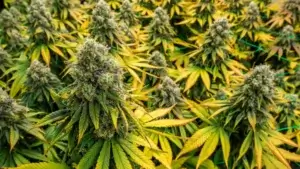Definition:
Hemp is a variety of the Cannabis sativa plant grown specifically for industrial and commercial uses. It is distinguished by its low THC content (typically less than 0.3%), which prevents it from producing psychoactive effects.
Purpose and Usage
Hemp is an incredibly versatile plant used in a wide range of industries, including textiles, food, construction, and wellness products. Its seeds, stalks, and leaves are all utilized for different purposes, making it a valuable resource in sustainable agriculture and manufacturing.
How It Relates to Cannabis
- Distinction from Marijuana:
- Hemp and marijuana both come from the Cannabis sativa species but differ in their THC content. Hemp is defined as having less than 0.3% THC, making it non-psychoactive.
- Parts of the Plant and Their Uses:
- Seeds: Used for food products (e.g., hemp oil, hemp protein, and hemp hearts).
- Stalks: Processed into fiber for textiles, ropes, and biodegradable plastics.
- Leaves and Flowers: Used to extract CBD for wellness products.
- Cultivation:
- Grown for its long stalks and minimal branching.
- Requires less water and pesticides compared to many other crops, making it environmentally friendly.
- Legal Status:
- Legal in many countries for industrial and commercial purposes due to its non-psychoactive nature.
- In the U.S., hemp cultivation was legalized under the 2018 Farm Bill.
Common Misconceptions
- Hemp is the same as marijuana: While both come from Cannabis sativa, hemp contains negligible THC levels and cannot cause a psychoactive effect.
- Hemp is only for industrial use: While primarily used industrially, hemp-derived CBD is popular in wellness products.
- Hemp is a new crop: Hemp has been cultivated for thousands of years for its durable fibers and nutritional seeds.
Alternatives
- Flax: Used in textiles and health food products but lacks hemp’s versatility.
- Cotton: Common in textiles but requires significantly more water and pesticides.
- Synthetic Materials: Often used in construction or manufacturing but are less sustainable than hemp-based materials.
Importance of Hemp
Hemp is a cornerstone of sustainable agriculture and eco-friendly industries. Its versatility, from providing nutritious food to creating durable textiles and reducing plastic waste, highlights its significance. Hemp’s low environmental impact and wide-ranging applications make it a vital crop for addressing modern challenges like climate change and resource scarcity. In the cannabis space, hemp also provides non-intoxicating CBD, broadening its utility in health and wellness.





